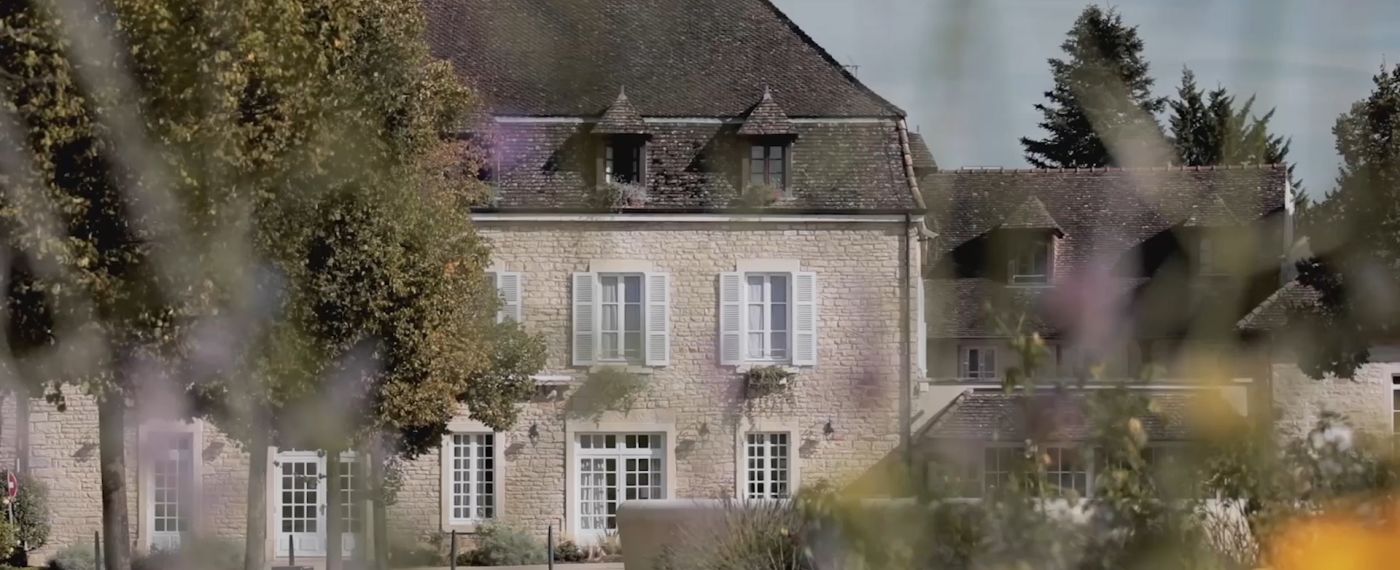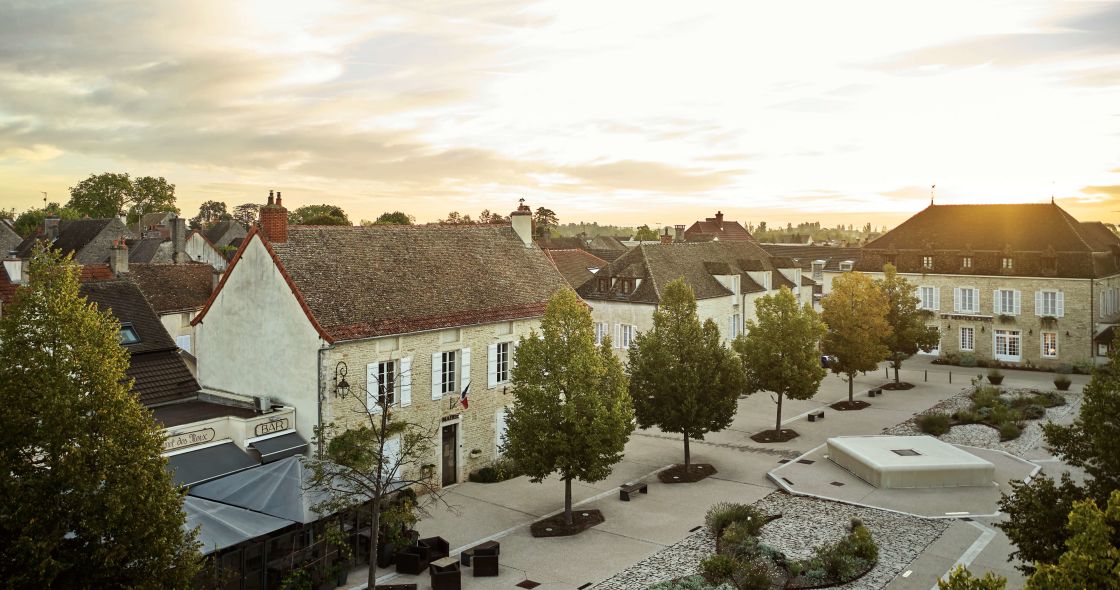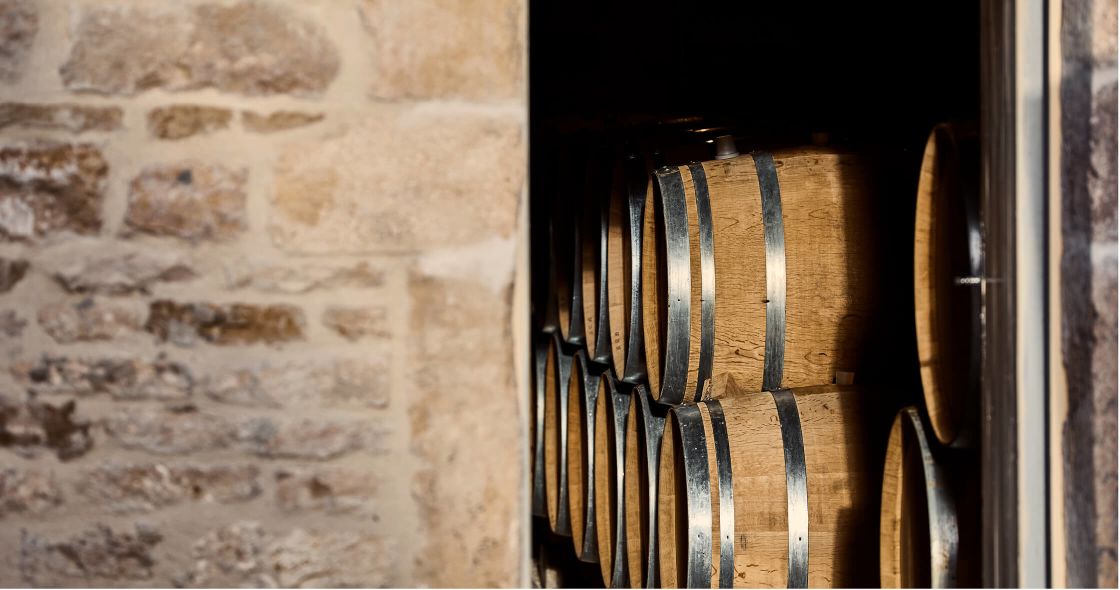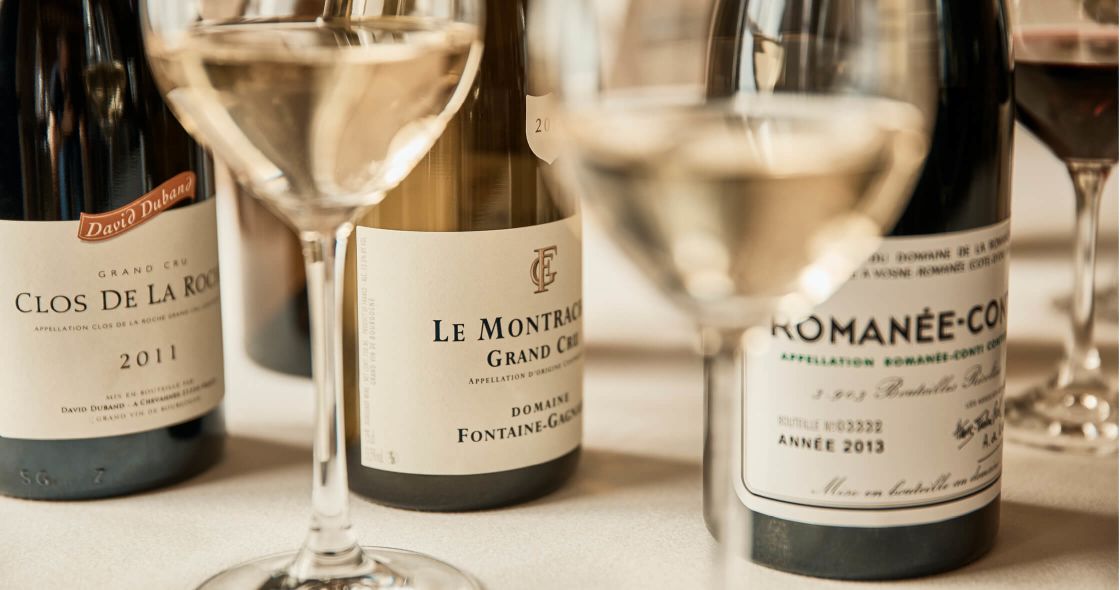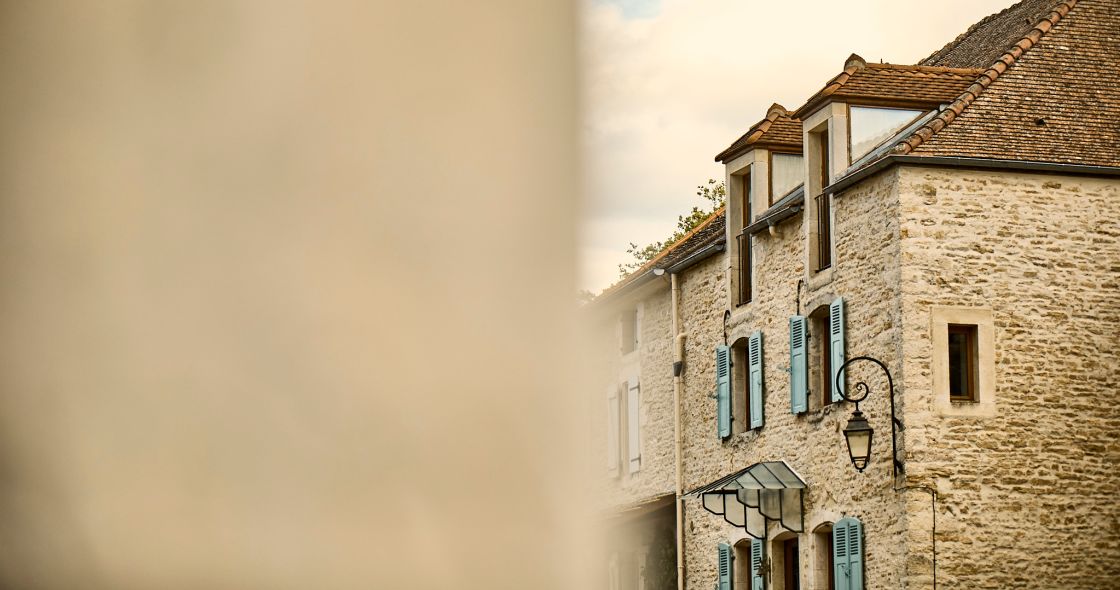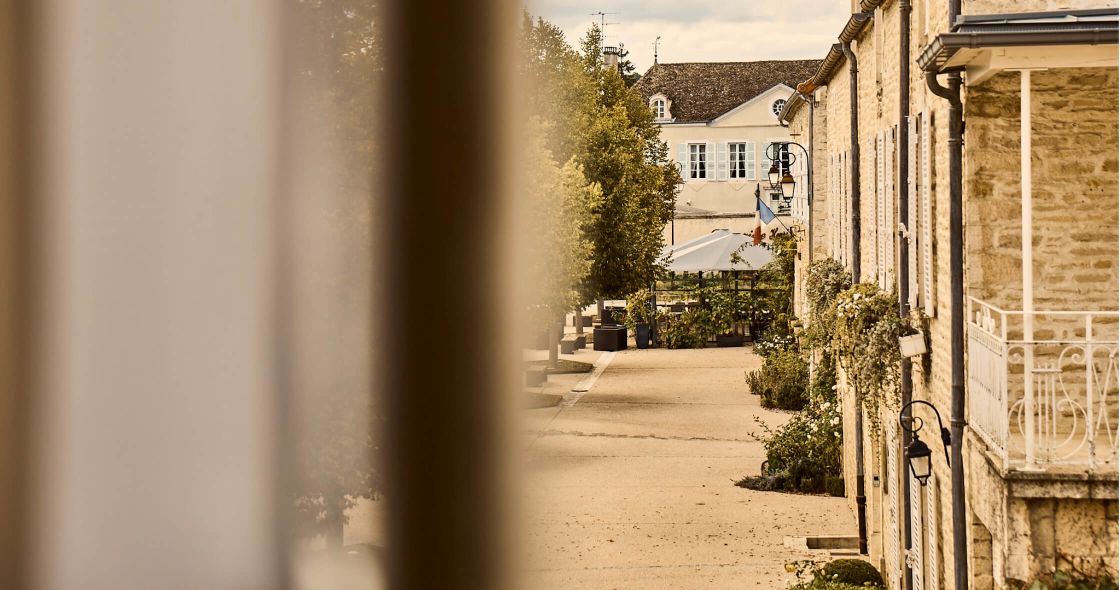


COMO Hotels and Resorts’ founder Christina Ong and her long-time friend and collaborator Paola Navone of Milan-based Otto Studio, talk about their latest project: COMO Le Montrachet in Burgundy.
They discuss the balance to be found between grace and playfulness, discretion and surprise, traditional craft and contemporary design.

CHRISTINA ONG:
I remember arriving here and seeing Puligny-Montrachet’s square for the first time — the Place des Marronniers. I had this feeling of clarity – the simple, grand simplicity of the shape. It wasn’t higgledy-piggledy, like the squares you find in other French villages, but open, almost minimalist, and full of warm French light.
PAOLA NAVONE:
The ‘Côte d’Or’, or ‘Gold Coast’, is another name for this narrow strip of land south of Dijon. The name is in fact an abbreviation of ‘Côte d’Orient’, or ‘eastern slope’. Viticulture has been practised here since the Middle Ages, ever since the Cistercian monks of Cluny Abbey first got a taste for Burgundy wine. I found that heritage very interesting. The idea of something golden, evolved from stony ground. In Old French, ‘Montrachet’ means ‘bald mountain’. It’s a reference to the poverty of the area’s soil.

CO: Out of those stones, an extraordinary terroir. Place des Marinerò feels like the centre of something special: the elegance of the architecture, the grace of the proportions, and beyond the square, a rise of ground with some of the finest vineyards in the world — the Grand Crus of white Burgundies.
PN: I agree: the square is immediately arresting — a flowing, contiguous space which links all the eighteenth and nineteenth-century buildings that now make up COMO Le Montrachet. On one side of the square, there is the main hotel and restaurant with its long lawned garden; on another side, The Residence, with two floors of rooms; and on the third side, there’s Villa Christine, which is my personal favourite because of the secret spaces we found when we opened up the roof to investigate. So beautiful! – the high oak-beamed eaves, which give this new proportion to Villa Christine’s second-floor guestrooms.
CO: We both wanted this hotel to feel anchored by the square. It’s why Paola changed the angle of the bar, so it looks onto this space, which is tucked inside a small, discrete community. Proportions are very interesting in Montrachet. You think of the reputation of this place — some of the most valuable wines in the world, created from handkerchief-sized vineyards. These parcels of modest-sized ‘Climats’ form the basis of the Burgundy model. If you are lucky enough to visit the cellars of Domaine Leflaive — our neighbour, based on the same village — it’s like entering a hidden world. But you could also easily miss it — the handmade oak-and-chestnut barrels hidden in stunning clay-brick cellars in the backstreets. There is something dignified about this village, in how it plays with proportions and expectations, between humility and grandeur, the understated and the rare.
There is something dignified about this village, in how it plays with proportions and expectations, between humility and grandeur, the understated and the rare.
PN: Good design is about creating that same ‘wow’ effect — the shift from something humble to a big surprise. At COMO Le Montrachet, you enter from the bar to the restaurant, moving from this intimate room which has a relatively low ceiling into this striking, vaulted volume we discovered when we dug into the bones of the original building. To honour the hand-crafted nature of Puligny-Montrachet, I designed a wall inspired by the local basket-weaving tradition — an 80-square-metre, 10-metre-high wall fashioned with wet willow in the traditional way. From the minute you collect the willow — prunings, which we’ve reused — you have one month to complete the weave. We had to catch a moment in nature, tied to the season. To make the restaurant space come alive, I also designed five giant moons — each moon two metres wide, weighing ninety-seven kilograms, illuminated from the inside with a gentle glow. These moons are wrapped in a metal wire, which is stitched very carefully — an exaggeration of a technique used all over Europe, to repair broken ceramics. I like the fragility this design imparts. I like the playfulness, too. Life is so complicated now. I’m always striving for simplicity, but I also want to hold on to the joy.

I designed a feature wall inspired by the local basket-weaving tradition fashioned with wet willow in the traditional way.

CO: That is Paola’s talent. Her humour. She is so grounded, and earthy, which includes the way she researches a location. The eighteenth-century Toile de Jouy prints used in our bedrooms have been inspired by scraps of material Paola picked up in local markets. The palette of grey, blue and sage echoes the shades of the surrounding countryside. But Paola is also never content with repeating herself, or anyone else. She’s never stuck because she is always alive to possibilities. In every project we do together, we talk about what it is about the country we like. We talk about how she can capture that essence. Paola has the imagination to take the starting point to another level, including the talent she works with — the artisans.
PN: They are magicians! The gentleman making the moons, stitching them with metal ties, he is a very serious sculptor. I worked with him on COMO Point Yamu in Thailand. He taught the local Thai artisans a technique of working with broken tiles to create this Picassiette effect. Then there are the zinc specialists creating the summer dining area on the restaurant terrace…

Paola engages all the best craftspeople. It makes me think of the savoir faire of the local wine growers, who are far removed from the rules of industrial production.

CO: Like the artisans Paola pulled into our last project together, COMO Castello del Nero in Tuscany, she engages all the best craftspeople. The upholsterers, the painters — artists who worked on the Louvre and the Uffizi. They are people who don’t go by the book. It makes me think of the savoir faire of the local wine growers, who are far removed from the rules of industrial production.
PN: I don’t like cheaper, easier, faster. It is the death of a creative life. Craft has always mattered to me. That is my passion.
CO: It’s why I like travelling — in Italy, France, Japan. There’s nothing I enjoy more than visiting artisans who are working in traditional ways but who are exploring their own contemporary style.
PN: But craft is also in danger of being forgotten. Sometimes the people I work with are very over-qualified. The carpenter who designed the custom-made spa furniture at COMO Castello del Nero in Italy — he is a special person. For COMO Le Montrachet, he is doing the bedside lamps. And the blacksmith who is making our outdoor tables — a grey metal with very beautiful tops in a lava stone glaze. This is another story, the way he works with hot iron in his forge. These people matter to me. And to Christina too. It’s why our long collaboration works. She is a woman who understands how to develop an idea, a place, relationships with creative people, and take it all to another level. Magicians are very important — to make something different.

Like colours in fashion and the seasons — they change things too. Sometimes this part of Burgundy is a beautiful yellow, sometimes a bright green.

CO: It’s also about having the ability to absorb the light.
PN: Yes, that’s an important point. The quality of light in the mountains is very different from the sea. The light in Tuscany is very different from what you find here in Burgundy.
CO: Like colours in fashion. The collections look different in Paris than they do when you see the same pieces in Singapore. And the seasons — they change things too. Sometimes this part of Burgundy is a beautiful yellow, sometimes a bright green. In spring you get these delicate pink blossoms.
PN: I’m always trying to find the right balance between the different strengths of colour and light.
CO: Like wines, good design needs air. A lot of air, to enhance the essence, the fragrance of the experience. It makes me think of something Brice de la Morandière said to me. He is the fourth-generation proprietor of Domain Leflaive, based in the same village as us. ‘In Burgundy, we believe very, very strongly in a sense of place,’ he said. We’re striving to honour that idea with COMO Le Montrachet, to respect grace, heritage and innovation — like the best Leflaive wines, to spark a new feeling. A taste of something you won’t easily forget.

To experience COMO Le Montrachet, book your stay here.
